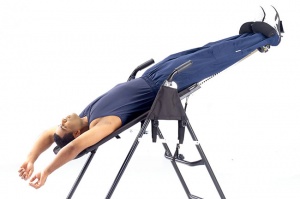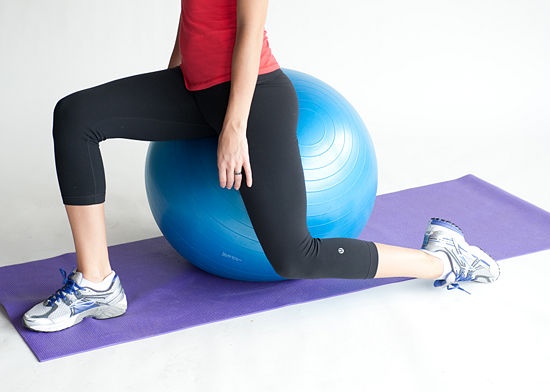
Back pain is a frustrating thing to live with and it can seriously detract from your quality of life. But a lot of the time, people with lower back pain do not or cannot undergo huge surgeries to fix it. However, there are other ways to treat lower back pain. One popular way to do so is through inversion therapy.
Inversion therapy involves being tilted or hung upside down, usually via an inversion table. The idea is to decompress the spine so the disc in your lower back it is not being pressed down and pinching nearby nerves. By taking the weight off the bones and the joints, a traction force will be created in your body which will relieve back pain. It is used to treat people with herniated discs and degenerated discs as well as people suffering from sciatica. So, do inversion tables work? Let’s first discuss the risks.
Risks of Inversion Therapy
High blood pressure, a raised heart beat, and glaucoma can occur because all the blood rushes to the head. For people with glaucoma, it is recommended that they do inversion therapy at a gentler angle instead of being complete upside down or almost completely upside down. Inversion therapy can cause or exacerbate glaucoma because of the blood rushing to the head which puts added pressure on the blood vessels in the eyes. Going at a gentler angle will keep the blood from rushing there as quickly which means there will be less pressure on the blood vessels in the eyes.
Gentler angles also help prevent higher blood pressure and a raised heart beat. There is also the risk of blacking out, especially with inversion tables. So it is very important to have a spotter the first couple of times you do it or go at a gently angle and slowly increase each day.

Remember, it is always important that you talk with your doctor or physical therapist about inversion therapy and how to properly use it before you try it.
Does it Work?
Using an inversion table has been shown to temporarily decompress the spine and relieve back pain. It can also significantly reduce the odds that you will need surgery for a herniated disc. However, there is no evidence that it works long-term to relieve lower back pain. While going upside down does cause the spine to decompress and the pressure to be relieved from your disc, your spine will start compressing again as soon as you are off the inversion table because gravity will start pushing your spine back down. Shortly after that, the pain will come back. But for those experiencing severe lower back pain, even the temporary relief from it might be worth it.
How to Use an Inversion Table
Remember that when you start inversion therapy, you must go slow at first, with only slight angles and you can increase the angle over time as you get more used to it. It’s always best to speak with your doctor or physical therapist before starting inversion therapy.
The first thing you need to do is look at your inversion table and see if it has pivot arm settings and adjust them to your preferred comfort if it does have them. If it does not, it should have a strap instead. The strap and the arm pivot serve the same purpose: to set the maximum angle for your session. On your first session do no more than 15 degrees.
Next, check the adjustable boom. You want to make sure the adjustable boom is one inch above your height because you will become temporarily taller as your spine elongates.
Go into the end-step frame and lock yourself in. You could be locked in with a padded bar, cuffs, or anti-gravity boots, depending on the model. If everything is correct, you will then angle back with the pivot point roughly in the middle of your body as if you were lying down on a see-saw. If you do not move back, then the boom is too tall. If you move back before you place your arms, then the boom is too short.
Control the table with your body movement after that. Move your arms higher to increase the angle or bend your knees to come back to an upright position. Pause in the horizontal position before coming upright so you do not jar yourself when finishing your session, or making yourself unnecessarily dizzy.
While using an inversion table does not relieve back pain for a long period of time, it does temporarily relieve it for a good number of individuals, which can automatically lead to a better quality of life. When it’s a supplement to a physical therapy routine, it’s really effective at relieving back pain for more comfort and relief and a better life.



